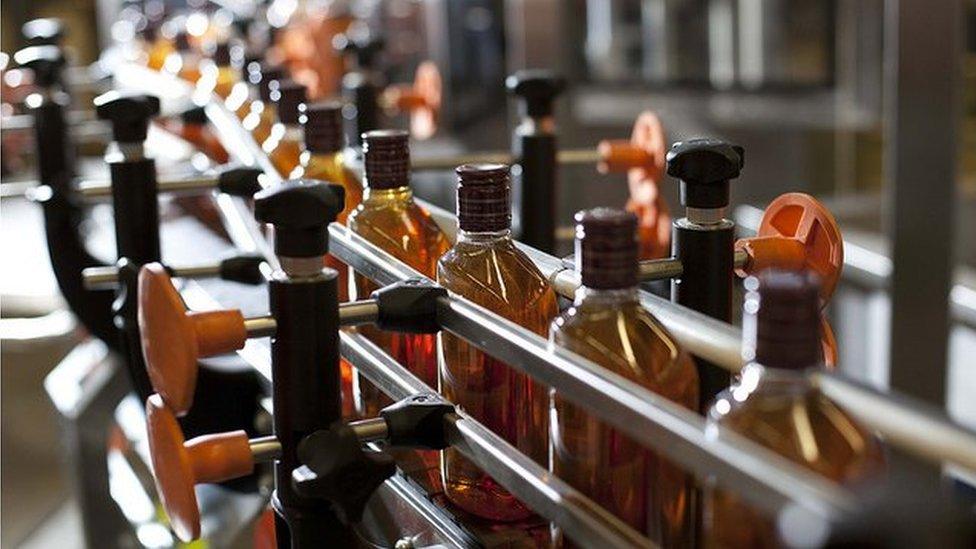Scotch whisky demand shows small rise
- Published

Demand for Scotch whisky went up last year, reversing a longer-term decline, according to new figures.
The Scotch Whisky Association (SWA) published the figures, drawn from HM Revenue and Customs data.
They show that the number of bottles released to the market rose from 83.3m in 2014 to 84.9m last year.
However, that is still about a quarter less than a decade ago. In 2005, 107m bottles were released for retail in Britain.
There have never been more than 100m bottles since 2008.
British tastes have changed and the industry's marketing effort has gone into fast-growing export markets.
The SWA said the boost in demand was helped by the 2% cut in excise duty on spirits in last year's Westminster Budget - only the fourth cut in whisky duty in the past century.
It is reckoned that the duty cut helped boost spirits sales and helped the Treasury raise £107m more in revenue.
The reduction followed the freeze and scrapping of the alcohol duty escalator, which was pushing up prices faster than inflation.
The SWA has been lobbying the Treasury to cut duty again, saying that a 76% tax take on the average-priced bottle of Scotch whisky is still too high.
David Frost, chief executive of the SWA, commented: "A strong UK market is vital, particularly for new entrants to the industry.
"In the last two years, nine new distilleries have started production in Scotland and they need a strong domestic base to grow from.
"The UK is still the third biggest market for Scotch, but it is fragile and competitive."
The industry also claims that relatively high tax on spirits in the UK encourages other countries to levy high tax on Scotch-strength spirits, which can mean an advantage to their own, domestic, lower-strength liquor.
The measure of demand in the industry is based on HMRC figures of bottles released from whisky bonds - the point at which they are taxed. That is not a measure of how much wholesalers and retailers sell.